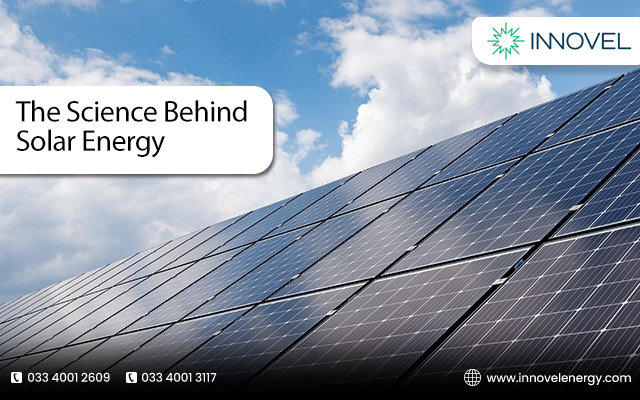Solar power may be harnessed and transformed into electricity or other kinds of energy. It is used to make buildings warmer and reduce global climate change from pollution. In regards to solar power, a 1-megawatt solar power plant has the potential to mitigate more than 1,500 tons of CO2 emissions annually in contrast to conventional fossil fuel-derived electricity generation.
The science behind solar energy
The science behind solar energy is interesting and grounded in fundamental principles of physics and chemistry. Solar energy is utilised from the sun’s rays using photovoltaic (PV) cells or solar thermal systems. Here is a breakdown of the science behind both methods:
- Photovoltaic (PV) cells
Through Einstein’s genius, we got the groundwork of solar energy, which was the photoelectric effect. At the core of PV technology lies the photovoltaic effect and it takes place when certain materials, such as silicon, absorb photons (light particles) from sunlight. The energy from these photons excites electrons in the material, creating an electric current. PV cells are normally constructed with a p-n junction, creating an electric field within the cell that causes the liberated electrons to flow in a particular direction, creating a current. The efficiency of commercially accessible PV panels averaged less than 10% in the mid-1980s, had risen to approximately 15% by 2015 and is now approaching 25% for state-of-the-art modules. When sunlight hits the PV cell, it generates a flow of electrons, resulting in direct current (DC) electricity. This DC electricity may then be converted into alternating current (AC) using inverters for use in homes, businesses or the grid.
Innovative solar solutions pave the path for a sustainable future by reducing carbon footprints and lowering energy costs for homes and businesses.
- Solar thermal systems
Solar thermal systems utilise mirrors or lenses to concentrate sunlight onto a minor area, increasing its intensity. This concentrated sunlight is used to heat a fluid like water, to high temperatures and is then used to produce steam that operates a turbine connected to a generator, producing electricity. Solar thermal systems function based on the principles of thermodynamics, converting solar energy into mechanical energy (steam) and then into electrical energy (electricity). Some solar thermal systems incorporate thermal energy storage to store surplus heat generated during sunny periods for use during cloudy or nighttime conditions. This enhances the system’s reliability and enables continuous electricity generation.
Worldwide, dwellings utilising solar thermal technologies for water heating touched 250 million in 2020. In regards to efficiency harvesting energy from the sun, solar thermal is more efficient at around 70%. This renewable and sustainable system provides users with ambient air to heat a carbon dioxide natural refrigerant that has a zero global warming effect, consuming less than 0.01kWh for 1L of hot water production.
Conclusion
Through the sophisticated mechanisms of photovoltaic cells and solar thermal systems, sunlight is converted into usable energy, significantly reducing the reliance on fossil fuels. Continuous technological advancements enhance the efficiency and affordability of solar power, making it an increasingly viable solution for addressing global energy demands. Solar power leverages the bounty of solar radiation reaching the Earth’s surface to generate clean and renewable energy.

